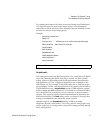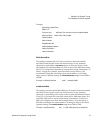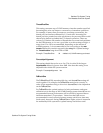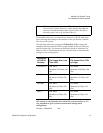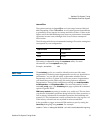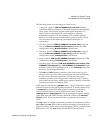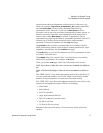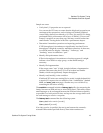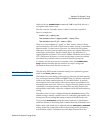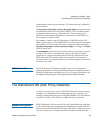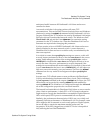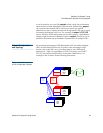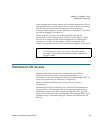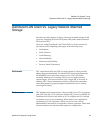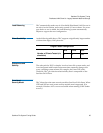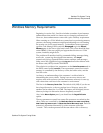
StorNext File System Tuning
The Metadata Controller System
StorNext File System Tuning Guide 19
displayed by the cvadmin who command). If all is specified, the test is
run against each client in turn.
The test is run for 2 seconds, unless a value for seconds is specified.
Here is a sample run:
snadmin (lsi) > latency-test
Test started on client 1 (bigsky-node2)... latency 55us
Test started on client 2 (k4)... latency 163us
There is no rule-of-thumb for “good” or “bad” latency values. Latency
can be affected by CPU load or SNFS load on either system, by unrelated
Ethernet traffic, or other factors. However, for otherwise idle systems,
differences in latency between different systems can indicate differences
in hardware performance. (In the example above, the difference is a
Gigabit Ethernet and faster CPU versus a 100BaseT Ethernet and a slower
CPU.) Differences in latency over time for the same system can indicate
new hardware problems, such as a network interface going bad.
If a latency test has been run for a particular client, the cvadmin who
long command includes the test results in its output, along with
information about when the test was last run.
Mount Command Options0
The following SNFS mount command settings are explained in greater
detail in the
mount_cvfs man page.
The default size of the buffer cache varies by platform and main memory
size, and ranges between 32MB and 256MB. And, by default, each buffer
is 64K so the cache contains between 512 and 4096 buffers. In general,
increasing the size of the buffer cache will not improve performance for
streaming reads and writes. However, a large cache helps greatly in cases
of multiple concurrent streams, and where files are being written and
subsequently read. Buffer cache size is adjusted with the buffercachecap
setting.
The buffer cache I/O size is adjusted using the
cachebufsize setting. The
default setting is usually optimal; however, sometimes performance can
be improved by increasing this setting to match the RAID5 stripe size.
Using a large
cachebufsize setting decreases random I/O performance
when the amount of data being read is smaller than the cache buffer size.
Buffer cache read-ahead can be adjusted with the
buffercache_readahead
setting. When the system detects that a file is being read in its entirety,
several buffer cache I/O daemons pre-fetch data from the file in the



